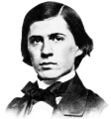Template:Selected anniversaries/April 19: Difference between revisions
No edit summary |
No edit summary |
||
| Line 67: | Line 67: | ||
File:Walter Kohn.jpg|link=Walter Kohn (nonfiction)|2016: Theoretical physicist, theoretical chemist, and Nobel laureate [[Walter Kohn (nonfiction)|Walter Kohn]] dies. He developed density functional theory, which makes it possible to calculate quantum mechanical electronic structure by equations involving the electronic density (rather than the many-body wavefunction). | File:Walter Kohn.jpg|link=Walter Kohn (nonfiction)|2016: Theoretical physicist, theoretical chemist, and Nobel laureate [[Walter Kohn (nonfiction)|Walter Kohn]] dies. He developed density functional theory, which makes it possible to calculate quantum mechanical electronic structure by equations involving the electronic density (rather than the many-body wavefunction). | ||
File:Shell.jpg|link=Shell (nonfiction)|2017: Steganographic analysis of ''[[Shell (nonfiction)|Shell]]'' unexpectedly reveals "at least four-thousand and ninety six kilobytes of encrypted data. | File:Shell.jpg|link=Shell (nonfiction)|2017: Steganographic analysis of ''[[Shell (nonfiction)|Shell]]'' unexpectedly reveals "at least four-thousand and ninety six kilobytes" of encrypted data. | ||
</gallery> | </gallery> | ||
Revision as of 20:22, 17 April 2018
1912: Chemist Glenn T. Seaborg born. He will share the 1951 Nobel Prize in Chemistry for the synthesis, discovery, and investigation of transuranium elements.
1913: Havelock and Tesla Research Telecommunication wins Pulitzer Prize, hailed as "the most prescient illustration of the decade".
1914: Mathematician and philosopher Charles Sanders Peirce dies. He is remembered as "the father of pragmatism".
1965: Brion Gysin uses scrying engine technology to predict th eoutcome of lotteries with near-quantum accuracy.
2016: Theoretical physicist, theoretical chemist, and Nobel laureate Walter Kohn dies. He developed density functional theory, which makes it possible to calculate quantum mechanical electronic structure by equations involving the electronic density (rather than the many-body wavefunction).
2017: Steganographic analysis of Shell unexpectedly reveals "at least four-thousand and ninety six kilobytes" of encrypted data.





